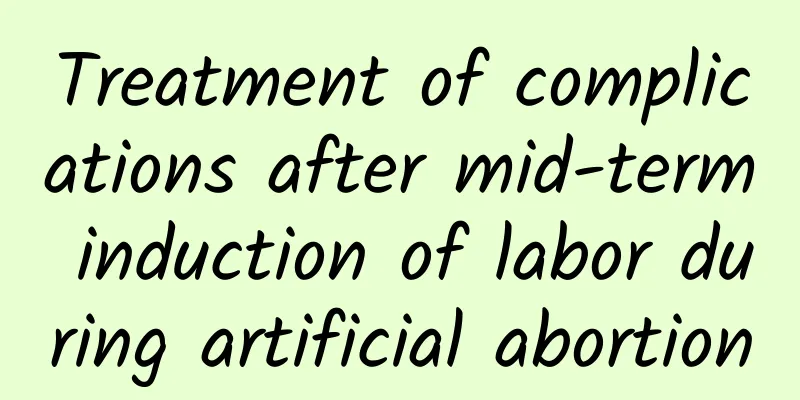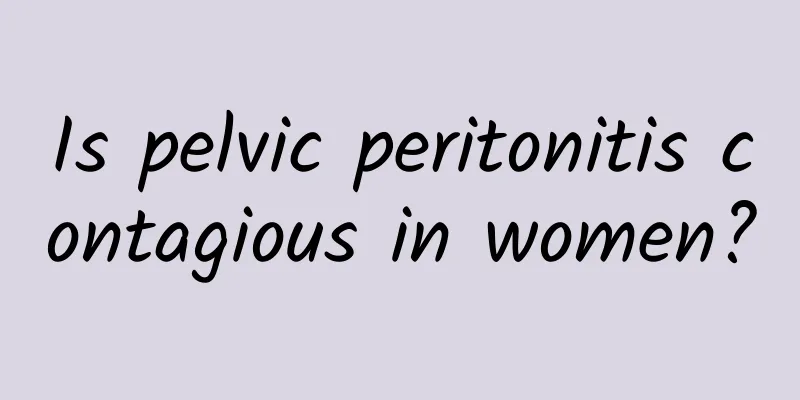Treatment of complications after mid-term induction of labor during artificial abortion

|
Mid-term induced labor is often due to missing the best time for abortion or problems with the mother or fetus. At this time, the placenta has been formed, the fetus is large, and the bones are hard. The cervix must be fully dilated during delivery, so it is more likely to have complications such as induced labor infection, uterine rupture, cervical and vaginal fractures, and placental retention. The treatment of related complications includes the following: 1. Treatment of infection during induced labor If the infection occurs before abortion, large amounts of antibiotics and hormones should be given intravenously to control the infection and prevent shock, while the decision on induction of labor and surgical methods should be made. If the infection occurs after induced labor, the patient should rest in bed and eat nutritious and easily digestible food. If the pain is severe, analgesics should be given. At the same time, strong and large amounts of antibiotics such as cephalosporin should be given intravenously. If intrauterine tissue residue is suspected, uterine curettage should be performed after the infection is controlled. 2. Treatment of uterine rupture and cervicovaginal rupture When patients have cervical and vaginal lacerations, the lacerations should be sutured promptly; when the uterus ruptures, cesarean section should be performed promptly; if patients lose too much blood and go into shock, anti-shock treatment should be actively given; antibiotics should be used after surgery to prevent infection. 3. Placenta Retention When the placenta remains in the uterine cavity, uterine curettage should be performed promptly; if the placenta is retained or adhered, manual removal should be performed under disinfection; if the patient has active vaginal bleeding, uterine curettage is required; if placental tissue residue is found in the puerperium, uterine curettage and pathological examination should be performed promptly; oxytocin should be used after surgery, and antibiotics should be used to prevent infection. |
<<: Diagnosis of functional hypothalamic amenorrhea
>>: What are the manifestations of true cervical erosion?
Recommend
Which hospital in Beijing is best for treating breast cysts?
Which hospital in Beijing has the best effect in ...
Shen Linlong: Continuous exercise adds to your health
Text by Zhang Huixin and Yang Yuhao Shen Linlong ...
What causes dysmenorrhea and irregular menstruation?
Irregular menstruation in women, dysmenorrhea is ...
How much does it cost to check for cervical warts?
After being infected with cervical warts, many pa...
What are the causes of cervical erosion? Women's cervical erosion is caused by these 8 bad habits
In life, many women suffer from cervical erosion....
Patients must pay more attention to the common symptoms of uterine fibroids
In recent years, more and more people have been s...
How does female cervicitis come about? Two tests are necessary for the diagnosis of cervicitis.
Cervicitis is a common disease among women of chi...
Dietary considerations for menopausal women
It is best for menopausal women to eat less meat ...
What medicine should I take to treat amenorrhea for three months?
What medicine should I take to regulate my amenor...
Gua Sha can help you lose weight! Bye bye belly fat
Who says scraping is only used for people with he...
10 ways to eat secretly to burn fat in a super-effective way
Do you want to have perfect curves, run and exerc...
What is the Chinese medicine for regulating uterine fibroids? Chinese medicine formula for regulating uterine fibroids
What is the Chinese medicine for regulating uteri...
What are the symptoms of second-degree cervical erosion in women? How to treat second-degree cervical erosion in women?
There are more and more types of diseases in wome...
What fruits are good for dysmenorrhea? Eat more of these
I believe that many women have experienced dysmen...
Four major hazards of artificial abortion
Artificial abortion is very harmful to women'...









